
Index
Case Studies of RFID, IoT & Drone Applications GAO Software Provides Easy Integration with API
Case Studies of RFID, IoT & Drone Applications
GAO RFID Systems & Hardware for Transit And Ground Passenger Transportation Industry
GAO Makes Efforts to Satisfy Customers
GAO Has Served Transit And Ground Passenger Transportation Industry Extensively
Overview
The transit and ground passenger transportation industry produces key construction materials like transportation and book. These materials are essential for building infrastructure and structures. It’s capital-intensive, dependent on construction activity, faces environmental challenges, operates in a global market, and seeks innovations for sustainability.
GAO’s RFID, BLE, IoT, and drone technologies have helped its customers in transit and ground passenger transportation Industry to improve their work processes, their operations and productivity by better management of their staff, materials and operational equipment such as Kilns, Crushers, Mixers, Transportation mills, Silos, Conveyors, Batch plants, Pavers, Block-making machines, Pipe-making machines, Precast book molds, Vibrators, Grout pumps, Book testing equipment, Batching and weighing systems, Curing chambers, Rebar processing machinery, Dust collectors, Material handling equipment, Packaging and palletizing machines.
Ranked as one of the top 10 global RFID suppliers, GAO RFID Inc. is based in New York City, U.S. and Toronto, Canada. GAO offers a comprehensive selection of UHF, HF (including NFC) and LF RFID (radio frequency identification) readers and tags, BLE (Low Energy Bluetooth) gateways and beacons, and various RFID and BLE systems such as people tracking, asset tracking, access control, parking control, fleet management, WIP (work in progress), traceability. Such RFID and BLE products and systems, as well as its IoT and drone technologies, have been successfully deployed for transit and ground passenger transportation industry. Its sister company, GAO Tek Inc. https://gaotek.com, is a leading supplier of industrial or commercial testers and analyzers, drones, and network products.
The targeted markets of both GAO RFID Inc. and GAO Tek Inc. are North America, particularly the U.S., Canada, Mexico, and Europe. As a result, this website gaorfid.com is offered in English and other major languages of North America and Europe such as Spanish, French, German, Italian, Polish, Ukrainian, Romanian, Russian, Dutch, Turkish, Greek, Hungarian, Swedish, Czech, Portuguese, Serbian, Bulgarian, Croatian, Danish, Finnish, Norwegian, Slovak, Catalan, Lithuanian, Bosnian, Galician, Slovene, Latvian, Estonian, Welsh, Icelandic, and Irish.
Applications & Benefits of GAO’s RFID, BLE, IoT & Drones for Transit And Ground Passenger Transportation Industry
 To satisfy its customers, GAO’s RFID or RFID Systems for transit and ground passenger transportation industry are offered in 2 versions. One version is that its software is running on a local server that normally is on our client’s premises, and another version runs in the cloud. The cloud server could be GAO’s cloud server, client’s own cloud server or a cloud server from one of the leading cloud server providers such as Amazon Web Services (AWS), Microsoft Azure, Google Cloud, IBM Cloud (formerly SoftLayer), Oracle Cloud, RedHat, Heroku, Digital Ocean, Cloudflare and Rackspace. The above illustrates GAO system for transit and ground passenger transportation Industry software running on a local server
To satisfy its customers, GAO’s RFID or RFID Systems for transit and ground passenger transportation industry are offered in 2 versions. One version is that its software is running on a local server that normally is on our client’s premises, and another version runs in the cloud. The cloud server could be GAO’s cloud server, client’s own cloud server or a cloud server from one of the leading cloud server providers such as Amazon Web Services (AWS), Microsoft Azure, Google Cloud, IBM Cloud (formerly SoftLayer), Oracle Cloud, RedHat, Heroku, Digital Ocean, Cloudflare and Rackspace. The above illustrates GAO system for transit and ground passenger transportation Industry software running on a local server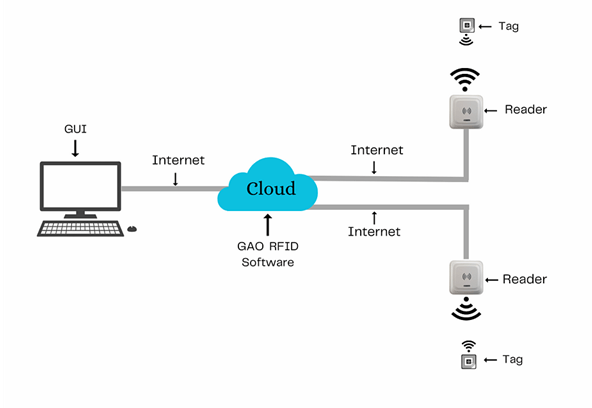 The above illustrates GAO system for transit and ground passenger transportation industry with its software running in cloud.
The above illustrates GAO system for transit and ground passenger transportation industry with its software running in cloud.
GAO’s RFID and BLE technologies, consisting of RFID readers, RFID tags, BLE gateways, BLE beacons, software, cloud services and their systems, have the following applications in transit and ground passenger transportation industry:
- Inventory Management: GAO’s RFID tags can be attached to products, pallets, or containers to track inventory levels in real-time. This helps wholesalers maintain accurate stock levels, reduce overstock and understock situations, and optimize reorder processes.
- Asset Tracking: GAO’s RFID tags can be used to track valuable assets such as machinery, equipment, and tools. This ensures that assets are properly accounted for, and their location and condition can be monitored.
- Order Fulfillment: GAO’s RFID technology can be integrated into the order picking process. RFID readers can assist warehouse staff in locating and picking the right products quickly and accurately, reducing errors and improving order fulfillment speed.
- Security: GAO’s RFID-enabled access control systems can enhance security in warehouses and distribution centers by restricting unauthorized access to sensitive areas. Employees and visitors can be issued RFID cards or badges for secure entry.
- Anti-Theft: GAO’s RFID tags with anti-theft features can deter theft in retail environments. Products can be tagged, and RFID-enabled security gates can trigger alarms if an item is taken without proper deactivation at the point of sale.
- Quality Control: GAO’s RFID can be used for quality control by tagging products with information about manufacturing dates, batch numbers, and quality inspection data. This helps in quickly identifying and recalling defective items.
- Maintenance and Service: GAO’s RFID can be used to track maintenance schedules and service histories of machinery and equipment, ensuring timely maintenance and reducing downtime.
- Vendor-Managed Inventory (VMI): GAO’s RFID technology can be used in VMI programs, where suppliers monitor and manage the inventory levels of their customers. This enables just-in-time replenishment and reduces the need for excess inventory.
- Product Authentication: GAO’s RFID tags with unique identification codes can be used to verify the authenticity of products. This is particularly important for wholesalers dealing with high-value items where counterfeiting is a concern.
- Cold Chain Management: GAO’s In cases where transportation include perishable items, RFID can be used for temperature monitoring and cold chain management to ensure product quality and safety.
- Warranty and Recall Management: GAO’s RFID tags can store warranty information and product details, making it easier to manage warranty claims and track products subject to recalls.
GAO’s drone technologies find the following applications in the transit and ground passenger transportation industry:
- Inventory Management: GAO’s Drones equipped with cameras and sensors can be used to perform aerial inventory counts. They can quickly and accurately scan large warehouses and outdoor storage areas to provide real-time inventory data. This reduces the need for manual counts, minimizes errors, and improves inventory accuracy.
- Warehousing Optimization: GAO’s Drones can help optimize warehouse layouts by providing aerial views and data analysis. Wholesalers can identify bottlenecks, storage inefficiencies, and opportunities for layout improvements based on the information collected by drones.
- Security and Surveillance: GAO’s Drones can serve as a cost-effective security solution for monitoring warehouses and distribution centers. They can be programmed to conduct regular perimeter patrols and provide live video feeds to security personnel. Drones can also be used to investigate potential security breaches or incidents.
- Site Inspections: GAO’s Wholesalers often deal with large machinery and equipment. Drones can be used to inspect and assess the condition of this equipment. This can help identify maintenance needs, track wear and tear, and ensure that equipment is in optimal working condition.
- Shipping and Delivery: GAO’s Drones can be utilized for last-mile delivery of to customers, especially in areas with challenging logistics or traffic congestion. This can speed up delivery times and reduce delivery costs.
- Environmental Monitoring: GAO’s Wholesalers dealing with environmentally sensitive products or outdoor storage can use drones to monitor environmental conditions. This includes tracking temperature, humidity, and other factors that can affect the quality of .
- Mapping and Surveying: GAO’s Drones equipped with mapping and surveying tools can be used to create accurate 3D models of warehouse facilities and outdoor storage areas. This information can aid in planning expansions, renovations, or reconfigurations.
- Emergency Response: GAO’s In the event of a fire or other emergency situation, drones can provide real-time aerial views to assist emergency responders in assessing the situation and planning their response.
- Marketing and Promotion: GAO’s Wholesalers can use drones to capture high-quality aerial footage and images of their products and facilities for marketing and promotional purposes. This can be especially valuable for showcasing large equipment or industrial products.
- Transportation Monitoring: GAO’s Drones can monitor the movement of within a facility, such as tracking the progress of shipments from the moment they enter the warehouse to their departure. This can help improve logistics and reduce delays.
- Remote Supervision: GAO’s Managers and supervisors can use drones to remotely monitor warehouse operations, ensuring that tasks are being carried out efficiently and safely.
GAO’s IoT technologies, consisting of IoT sensors, sensors networks and systems, find the following applications in the transit and ground passenger transportation industry:
- Inventory Management: GAO’s IoT sensors can be placed on shelves, racks, or storage containers to monitor inventory levels in real-time. When stock reaches a certain threshold, automated reorder requests can be generated, ensuring that products are consistently available.
- Asset Tracking: GAO’s IoT-enabled asset tracking devices can be attached to valuable equipment, machinery, or vehicles. Wholesalers can monitor the location, condition, and usage patterns of these assets, reducing loss and optimizing maintenance schedules.
- Predictive Maintenance: GAO’s IoT sensors can collect data on the performance of machinery and equipment. By analyzing this data, wholesalers can predict when maintenance is required, reducing unplanned downtime and extending the lifespan of assets.
- Cold Chain Management: GAO’s Wholesalers dealing with perishable can use IoT temperature and humidity sensors to monitor the conditions of cold storage facilities and transportation vehicles. Alerts can be triggered if conditions fall outside acceptable ranges to prevent spoilage.
- Quality Control: GAO’s IoT sensors can monitor product quality by measuring factors like weight, dimensions, or even visual defects. Any deviations from quality standards can trigger alerts for immediate action.
- Security and Surveillance: GAO’s IoT-connected security cameras and sensors can enhance warehouse security. Wholesalers can monitor the premises remotely and receive alerts in case of unauthorized access or suspicious activities.
- Energy Management: GAO’s IoT devices can help optimize energy consumption in warehouses and facilities by monitoring lighting, heating, and cooling systems. This can lead to cost savings and reduced environmental impact.
- Supply Chain Visibility: GAO’s IoT-enabled tracking devices can be placed on shipments to provide real-time visibility into the location and condition of during transit. This helps in improving delivery accuracy and managing potential delays.
- Demand Forecasting: GAO’s IoT data, combined with advanced analytics, can provide insights into customer behavior and demand patterns. Wholesalers can adjust their inventory and procurement strategies accordingly, reducing overstock and understock situations.
- Order Fulfillment Automation: GAO’s IoT systems can automate order fulfillment processes by integrating with warehouse management systems. This can lead to faster, more accurate order picking and packing.
- Environmental Monitoring: GAO’s IoT sensors can monitor environmental conditions, such as air quality or humidity, in warehouses and storage areas. This ensures that products are stored in optimal conditions and helps prevent damage.
- Remote Monitoring and Control: GAO’s IoT platforms enable remote monitoring and control of various systems and equipment, allowing for quick responses to issues and reducing the need for on-site personnel.
- Compliance and Regulatory Tracking: GAO’s IoT solutions can assist in tracking and documenting compliance with industry-specific regulations and standards, ensuring that products meet safety and quality requirements.
GAO Helps Customers Comply with Standards, Mandates & Regulations of Transit And Ground Passenger Transportation Industry
GAO RFID Inc. has helped many companies in transit and ground passenger transportation Industry to deploy RFID, BLE, IoT and drone systems and to ensure such deployments complying with the applicable industry standards, mandates and government regulations:
RFID, BLE, IoT, & Drone Standards & Mandates
- ISO 18000 series
- Bluetooth SIG (Special Interest Group)
- IEEE 802.11 (Wi-Fi)
- OPC UA (Unified Architecture)
- ISA-95
- ASTM International F38 Committee
- ASTM F38 Committee
- ISO 21384 Series
- ANSI/CTA-2063
- FAA Regulations
- EASA Regulations
US. Government Regulations
- Clean Air Act (CAA)
- Clean Water Act (CWA)
- Resource Conservation and Recovery Act (RCRA)
- Occupational Safety and Health Administration (OSHA) regulations
- National Emissions Standards for Hazardous Air Pollutants (NESHAP)
- Comprehensive Environmental Response, Compensation, and Liability Act (CERCLA)
- Toxic Substances Control Act (TSCA)
- National Ambient Air Quality Standards (NAAQS)
- Federal Water Pollution Control Act (FWPCA)
- Environmental Protection Agency (EPA) regulations
Canadian Government Regulations
- Canadian Environmental Protection Act, 1999 (CEPA)
- Canadian Environmental Assessment Act (CEAA)
- Canadian Environmental Assessment Agency (CEAA) Regulations
- Canadian Environmental Assessment Agency (CEAA) Inclusion List Regulations
- Canadian Environmental Assessment Agency (CEAA) Administrative Monetary Penalties Regulations
- Canadian Environmental Assessment Agency (CEAA) Cost Recovery Regulations
- Canadian Environmental Assessment Agency (CEAA) Self-Assessment Regulations
GAO Software Provides Easy Integration with API
GAO’s RFID and BLE software offers a free trial for both the server-based and cloud versions, and offers an API to the important systems in transit and ground passenger transportation industry such as:
Personnel Management:
- Workforce Scheduling and Shift Management
- Health and Safety Compliance Monitoring
- Training and Certification Tracking
- Employee Performance Evaluation
- Payroll and Compensation Management
- Human Resources Information System (HRIS)
- Labor Union and Collective Bargaining Management
- Employee Scheduling and Shift Planning
- Recruitment and Applicant Tracking Systems (ATS)
Equipment Management:
- Predictive Maintenance
- Equipment Health Monitoring
- Equipment Utilization Optimization
- Equipment Calibration Management
- Equipment Rental and Leasing Management
Access Control:
- Visitor Management
- Security Surveillance
- Restricted Area Monitoring
- Time and Attendance Control
Warehouse Management:
- Stockpile Measurement
- Raw Material and Finished Product Storage
- Barcode and RFID Inventory Scanning
- Order Fulfillment and Dispatching
- Warehouse Layout Optimization
- Demand Forecasting and Inventory Replenishment
Supply Chain Management:
- Procurement and Purchase Order Management
- Transportation and Logistics Optimization
- Demand Planning and Forecasting
- Production Planning and Scheduling
- Just-in-Time (JIT) Inventory Management
- Cold Chain Management for Book Additives
Other Applications:
- Batch Control and Recipe Management
- Customer Relationship Management (CRM)
- Financial Management and Cost Control
- Regulatory Compliance (Safety, Environmental, Building Codes)
GAO has enabled its customers to make use of some of the leading software and cloud services in the transit and ground passenger transportation industry. Below are some of popular software and cloud services in transit and ground passenger transportation industry SAP SuccessFactors, Oracle HCM Cloud, ADP Workforce Now, Kronos Workforce Central, IBM Maximo, Infor EAM, eMaint CMMS, Fiix, UpKeep, Maintenance Connection, Microsoft Azure, Amazon Web Services (AWS), Google Cloud Platform (GCP), IBM Cloud, Oracle Cloud, SAP Cloud Platform, Salesforce Platform, ServiceNow, Workday, ADP Workforce Cloud, Warehouse Management Cloud, Manhattan Associates Warehouse Management, SAP Extended Warehouse Management (EWM), Blue Yonder (formerly JDA Software) Warehouse Management, Zebra Technologies (for barcode and RFID solutions), Honeywell Intelligrated (for warehouse automation), Microsoft Dynamics 365 Supply Chain Management, Kinaxis RapidResponse, Descartes Systems Group (for logistics and supply chain solutions), Infor Supply Chain Management.
GAO has worked with some of the leading technology companies in the transit and ground passenger transportation industry to provide integrated RFID, BLE, IoT and drone solutions to customers. Here are some of the technology leaders in transit and ground passenger transportation industry
IBM, SAP, Oracle, Microsoft, Infor, Salesforce, Siemens PLM Software, Trimble, Rockwell Automation, Hexagon PPM, Siemens, Schneider Electric, ABB, Honeywell, Mitsubishi Electric, Eaton Corporation, Emerson Electric, Omron Corporation, Yokogawa Electric Corporation, Telemecanique (Schneider Electric), Rockwell Automation, Siemens, Emerson Electric, Schneider Electric, ABB, Honeywell, GE Digital, Johnson Controls, Wonderware (Schneider Electric), Invensys (Schneider Electric)
Case Studies of RFID, IoT & Drone Applications
Case Studies of RFID Applications
Below are some RFID application cases in the Transit and ground passenger transportation Industry.
A large transportation manufacturer in the USA implements an RFID-based inventory management system. RFID tags are affixed to raw materials such as aggregates, transportation good, and additives. RFID readers installed at various storage locations automatically record inventory levels and notify the inventory manager when it’s time to reorder. This reduces stockouts, prevents overstocking, and minimizes manual tracking efforts.
A transportation manufacturing plant in the USA uses RFID sensors embedded in book molds. These sensors monitor curing temperatures and humidity levels during the book curing process. RFID data is transmitted to a central system, ensuring that each book product meets precise quality specifications. Any deviations trigger immediate alerts for corrective action.
An block manufacturing facility in Canada equips workers with RFID-enabled safety vests. These vests incorporate RFID tags that communicate with fixed RFID readers installed in dangerous areas of the plant. If a worker enters a restricted zone without proper authorization or safety equipment, the system sends instant alerts to plant supervisors, ensuring a rapid response to potential hazards.
A book transportation manufacturer in Canada employs RFID tags on heavy machinery and equipment. These tags store maintenance schedules and usage data. When equipment needs servicing or is approaching its maintenance interval, RFID sensors trigger automated maintenance requests. This proactive approach reduces downtime and extends equipment lifespan.
A European transportation production facility integrates RFID technology into its energy management system. RFID sensors monitor energy consumption across different production processes. The data collected allows for real-time analysis and optimization of energy usage, leading to significant energy savings and reduced environmental impact.
A transportation products manufacturer in Europe embeds RFID sensors in book blocks and pipes during production. These sensors continuously monitor structural integrity and performance characteristics in real-time. Data collected from RFID sensors help in early detection of potential issues, reducing product defects and ensuring compliance with industry standards.
Many applications of RFID by GAO can be found here.
Case Studies of IoT Applications
Below are some IoT application cases in the transit and ground passenger transportation industry.
A transportation manufacturing plant in the USA implements an IoT-based environmental monitoring system. IoT sensors are deployed to continuously measure air quality, dust emissions, and noise levels in and around the facility. The data is transmitted to a central control center in real-time, allowing the plant to proactively address environmental compliance issues and minimize environmental impact.
A transportation plant in the USA adopts IoT sensors on critical machinery, such as mixers and conveyors. These sensors collect real-time data on equipment performance, including temperature, vibration, and power consumption. Advanced analytics and machine learning algorithms predict when equipment maintenance is needed, reducing unexpected breakdowns and improving operational efficiency.
A transportation manufacturing facility in Canada integrates IoT devices into its energy management strategy. Smart meters and sensors are installed to monitor electricity and natural gas consumption across the plant. Real-time data is analyzed to identify energy-saving opportunities and implement load-shifting strategies to reduce energy costs.
A manufacturer in Canada leverages IoT-enabled tracking devices on trucks delivering book elements to construction sites. These devices provide real-time location data, estimated arrival times, and traffic updates. This information helps optimize delivery schedules, improve customer service, and reduce transportation costs.
A European and structural transportations manufacturer deploys IoT sensors within molds during the curing process. These sensors monitor temperature, humidity, and curing time. Data is collected and analyzed in real-time, ensuring that each book product meets strict quality standards. Any deviations trigger alerts for immediate corrective action.
A transportation production facility in Europe implements IoT-enabled silos and inventory management systems. Sensors track the level and quality of raw materials and finished products in real-time. IoT data is used for precise batching control, reducing waste and improving product consistency.
Case Studies of Drone Applications
Below are some drone application cases in transit and ground passenger transportation Industry.
A large transportation manufacturing plant in the USA employs drones for regular site inspections and monitoring. Drones equipped with high-resolution cameras and thermal imaging sensors are used to assess the condition of storage silos, kilns, and other critical infrastructure. This proactive approach helps identify potential issues such as cracks, leaks, or wear and tear early on, allowing for timely maintenance and preventing costly breakdowns.
A products manufacturer in the USA utilizes drones for stockpile management. Drones equipped with LiDAR technology and GPS mapping capabilities conduct regular aerial surveys of raw material stockpiles. This data is then used to calculate precise volume measurements and monitor stockpile changes over time, optimizing inventory levels and reducing waste.
A Canadian transportation production facility employs drones to monitor environmental compliance. Drones equipped with air quality sensors and cameras conduct routine flights over the facility to collect data on emissions and dust levels. This data is transmitted to regulatory authorities in real-time, ensuring compliance with environmental regulations and minimizing environmental impact.
A block manufacturing plant in Canada deploys drones for site safety and security. Drones equipped with high-resolution cameras and thermal imaging technology patrol the facility perimeter during off-hours. They can detect unauthorized access, monitor for potential security breaches, and provide real-time alerts to security personnel.
A European manufacturer offers drone services to construction companies. Drones equipped with cameras and 3D mapping technology capture aerial imagery of construction sites where their products are being used. This data is shared with construction project managers, enabling them to monitor progress, verify the correct transportation of precast elements, and ensure adherence to project timelines.
A European transportation plant in a remote location employs drones for remote inspection and maintenance. Drones equipped with high-resolution cameras and sensors are used to inspect equipment and infrastructure in challenging or hard-to-reach areas of the plant. Maintenance teams can then prioritize repairs and maintenance activities based on the drone inspection findings, improving overall plant efficiency.
GAO RFID Systems & Hardware for Transit And Ground Passenger Transportation Industry
GAO RFID Inc. offers the largest selection of BLE gateways, BLE beacons, RFID readers, tags, antenna, printers, and integrated RFID systems for various industries, including transit and ground passenger transportation industry. manufacturing industry.
BLE (Bluetooth Low Energy)
GAO offers advanced BLE gateways:
as well as versatile beacons with such important functions as temperature, humility, vibration and panic button:
GAO’s BLE technology is suitable for many industries, including transit and ground passenger transportation industry.
UHF (Ultra High Frequency) RFID
GAO offers the largest selection of UHF RFID readers for various industries, including transit and ground passenger transportation industry:
and an array of antennas to address different applications:
transit and ground passenger transportation Industry:
and antennas
GAO also offers RFID printers:
Digital I/O adapters:
and relay controllers:
For embedded applications, GAO offers UHF, HF and LF RFID reader modules:
- UHF 860 – 960 MHz RFID Modules
- 13.56 MHz High Frequency RFID Modules
- 125 kHz Low Frequency RFID Modules
In collaboration with its sister company GAO Tek Inc, a wide selection of high-quality drones is offered:
The RFID systems by GAO are highly popular for clients in transit and ground passenger transportation industry:
Physical asset or operational equipment tracking system:
Assets that can be effectively tracked using GAO’s technologies include
HF (High Frequency), NFC (Near Field Communications) and LF (Low Frequency) RFID
GAO offers the largest selection of HF, NFC, and LF RFID readers for various industries, including transit and ground passenger transportation industry:
HF, NFC and LF RFID tags, labels, badges, wristbands for various industries, including transit and ground passenger transportation Industry:
and antennas:
The RFID systems by GAO are highly popular for clients in transit and ground passenger transportation industry:
Physical asset or operational equipment tracking system:
Assets that can be effectively tracked using GAO’s technologies include
Batching Plants, Book Mixers, Transportation Silos, Book Pumps, Book Block Machines, Book Forms, Book Finishing Equipment, Precast Book Molds, Rebar Cutters and Benders, Book Testing Equipment, Curing Chambers, Book Recycling Equipment, Shotcrete Machines, Book Vibrators, Mortar Mixers, Pipe Making Machines, Book Surface Preparation Equipment, Trowels and Floats, Book Cutting Equipment, Book Transport Trucks (Ready-Mix Trucks).
People or workers tracking system:
Personnel or people access control system:
Parking or vehicle control system:
Furthermore, GAO provides the customization of RFID tags, RFID readers, BLE beacons and BLE gateways, IoT, drones, and systems and consulting services for transit and ground passenger transportation industry and for various industries in all metropolitans in North America, particularly the U.S., Canada and Mexico, and Europe:
GAO Makes Efforts to Satisfy Customers
Large Choice of Products
In order to satisfy the diversified needs of their corporate customers, GAO RFID Inc. and its sister company GAO Tek Inc. together offer a wide choice of RFID, BLE, IoT, drones, testing and measurement devices, and network products.
Overnight Delivery
In order to shorten the delivery to our customers, GAO has maintained a large stock of its products and is able to ship overnight within continental U.S. and Canada, and fast delivery to anywhere in Mexico and Europe from the nearest warehouse.
Local to Our Customers
We are located in both the U.S. and Canada. We travel to customers’ premises if necessary. Hence, we provide a very strong local support to our customers in North America, particularly the U.S., Canada and Mexico, and Europe. Furthermore, we have built partnerships with some integrators, consulting firms and other service providers in different cities to further strengthen our services. Here are some of the service providers in transit and ground passenger transportation industry we have worked with to serve our joint customers:
- Accenture
- Deloitte
- Capgemini
- Cognizant
- IBM Global Business Services
- DXC Technology
- HCL Technologies
- Infosys
- Wipro
- Tata Consultancy Services (TCS)
- CGI
- Sierra Systems (NTT Data Company)
- WSP Canada
- BDO IT Solutions
- T4G Limited
- SNC-Lavalin Group Inc.
- Atos
- T-Systems
GAO Has Served Transit And Ground Passenger Transportation Industry Extensively
GAO RFID Inc. and its sister company GAO Tek Inc. together offer a wide choice of RFID, BLE, IoT, drone, testing and measurement devices, and network products.
GAO’s products and technologies have helped its customers in transit and ground passenger transportation industry to achieve success in Sustainable Construction, Carbon Capture, Digital Twin, Industry 4.0, Smart Book, Green Building, IoT (Internet of Things), BIM (Building Information Modeling), Precast Book, 3D Printing, Self-Healing Book, Circular Economy, Lightweight Book, Modular Construction, Automation, Augmented Reality (AR), Robotics, Energy Efficiency, Resilient Infrastructure, Nanotechnology.
GAO RFID Inc. has deployed RFID, BLE and IoT projects for many companies in transit and ground passenger transportation industry, including many in its various divisions such as:
- Public Transit: Public transit includes services provided by government or private entities to transport passengers within urban or suburban areas. This division encompasses various modes of transportation, such as buses, trams, light rail, and subway systems.
- Intercity Transportation: Intercity transportation involves the movement of passengers between cities or regions. It includes services like intercity buses, long-distance trains, and commercial airline flights.
- School Transportation: This division is focused on transporting students to and from educational institutions. It includes school buses and other dedicated student transportation services.
- Charter and Tour Services: Charter and tour services offer transportation for special events, tours, and charters. This can include charter buses, limousines, and other vehicles for group travel.
- Taxi and Ride-Sharing Services: This division includes traditional taxi services as well as modern ride-sharing platforms like Uber and Lyft, which provide on-demand transportation services using private vehicles.
- Limousine Services: Limousine services cater to clients seeking luxury transportation for special occasions, events, or executive travel.
- Shuttle Services: Shuttle services transport passengers between specific locations, such as airports and hotels, or within confined areas like university campuses or business parks.
- Paratransit Services: Paratransit services are designed to accommodate individuals with disabilities or special needs who may require door-to-door transportation. These services often use specialized vehicles equipped with accessibility features.
- Water Transportation: While not strictly ground-based, this division includes passenger ferries, water taxis, and other waterborne transportation options that move people across bodies of water.
- Specialized Transportation: Some companies within this industry specialize in niche markets, such as medical transportation for patients, prisoner transport services, or senior citizen transportation.
- Rental Car Services: While not a primary mode of passenger transportation, rental car companies are closely related to this industry, as they provide vehicles for individuals to use for ground transportation.
- Airport Shuttle Services: These services provide transportation between airports and nearby destinations, often serving travelers and airport employees.
GAO’s technologies enable its customers in transit and ground passenger transportation industry to effectively track their workforces such as Mixer Operator, Batch Plant Operator, Book Finisher, Precast Production Worker, Mason, Quarry Worker, Quality Control Inspector, Form Setter, Heavy Equipment Operator, Transportation Mason, Reinforcing Ironworker, Production Supervisor, Maintenance Technician, Mold Maker, Safety Coordinator, Environmental Compliance Specialist, Book Pump Operator, Batch Technician, Electrician, Welder and effectively track operational assets such as Mixer, Batch Plant, Conveyor, Kiln, Crusher, Silo, Paver, Formwork, Trowel, Vibrator, Rebar Cutter, Mold, Pump, Compactor, Saw, Loader, Crane, Excavator, Bulldozer, Rolle.
Here are some of the leading companies in transit and ground passenger transportation industry GAO has served:
- Uber
- Lyft
- Didi Chuxing
- Grab
- Ola
- Transdev
- FirstGroup
- National Express Group
- Stagecoach Group
- Keolis
- Greyhound Lines
- Alstom
- Siemens Mobility
- Lime
- Turo
- Bolt (formerly Taxify)
- Curb Mobility
- JUMP Bikes
- Whim
- Kabbee
- Ridecell
- FlixMobility
- TransitScreen
- CleverShuttle


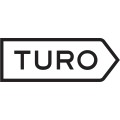





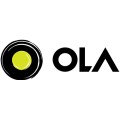
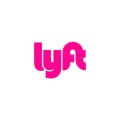
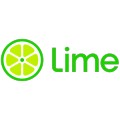


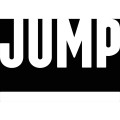
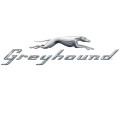


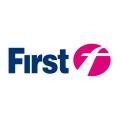




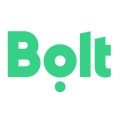
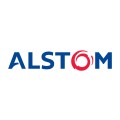
You Are Invited to Contact Us!
If you interested in our products, services or partnering with us, please feel free to contact us by filling out this form:
or email us at sales@gaorfid.com
